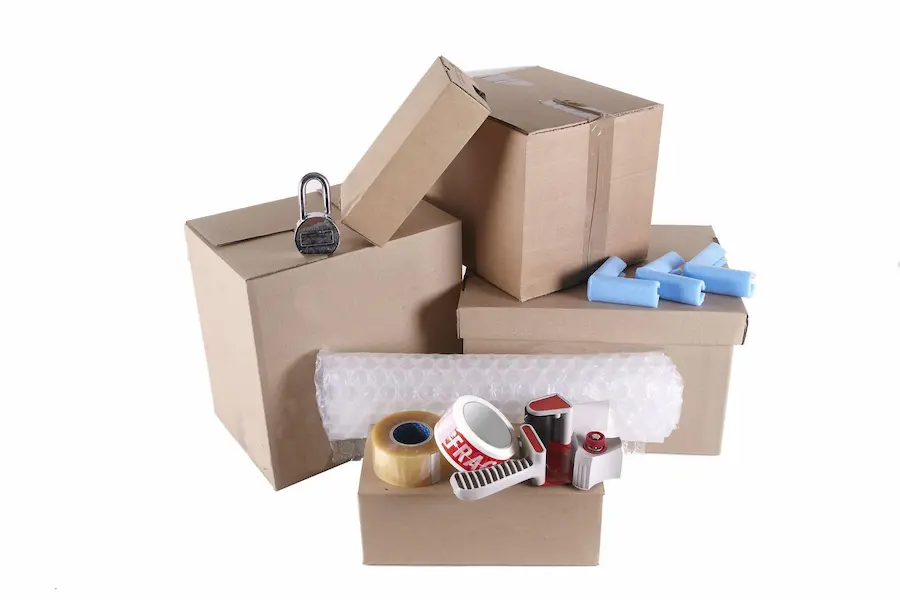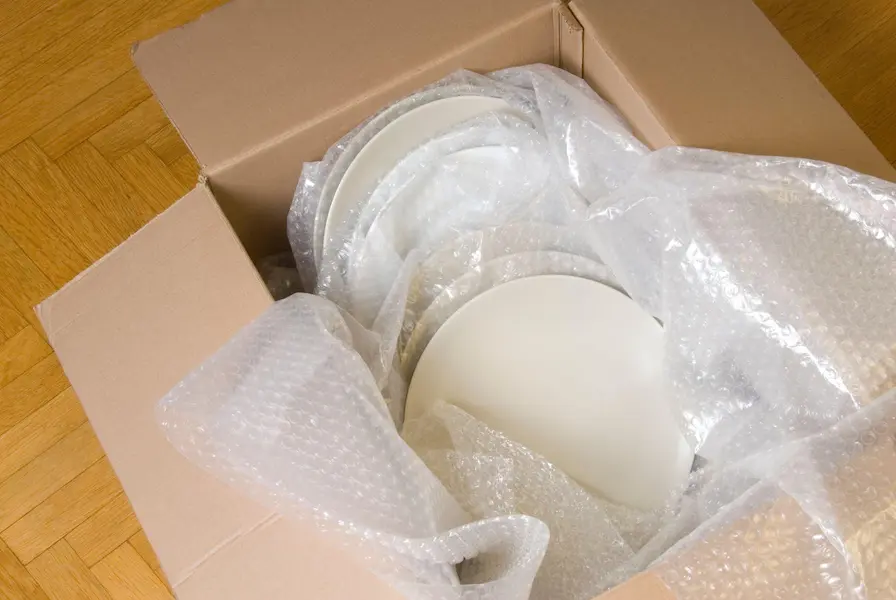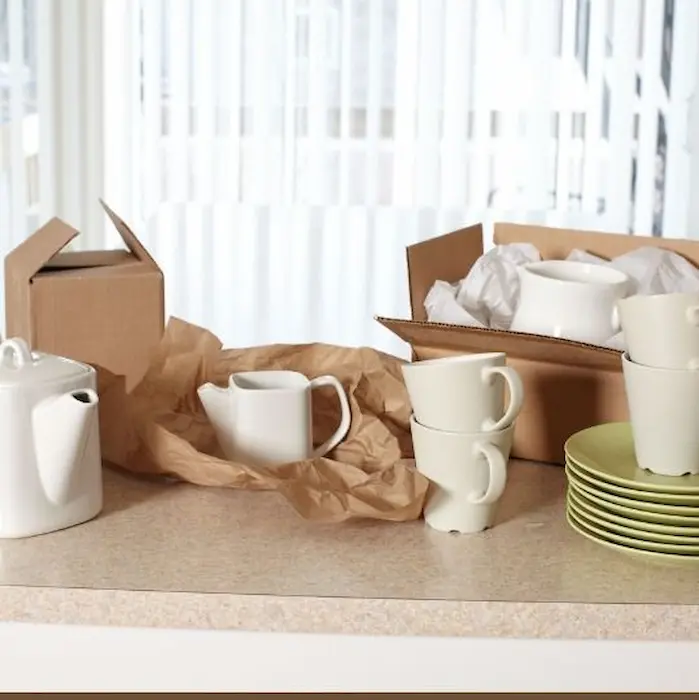Moving to a new place can be an exciting and complicated adventure. Still, packing and moving can be overwhelming, especially pack kitchen items. This guide will walk you through the steps to fill your kitchen items efficiently, ensuring they arrive at your new home safe and sound.
The Importance of Proper Packing for a Smooth Move
Moving is an ideal time to reassess the value of your possessions, and kitchen items are no exception. Proper packing protects your belongings during transit and helps you declutter and organize your kitchen space before settling into your new home.
Briefly Highlight the Challenges of Pack Kitchen Items
Packing your kitchen can be particularly challenging due to the variety of items, from fragile glassware to bulky appliances. Without a proper strategy, there’s a risk of things getting damaged or misplaced during the move.
Gathering Packing Supplies
Before you start packing, ensure you have the necessary supplies on hand. Here’s a list of essential packing supplies for your kitchen items:
- Sturdy boxes in various sizes
- Packing paper for wrapping fragile items
- Bubble wrap for added protection
- Packing tape for sealing boxes securely
- Markers for labeling boxes

Planning and Organizing
An organized approach is critical to successful packing. Here’s how to plan and organize the process effectively:
Assessing Kitchen Items
Before packing, go through your kitchen items to determine what you’ll take with you and what you can discard. It would be best if you gathered donated or disposed of things you no longer need.
Creating a Packing Timeline and Checklist
Establish a packing timeline and create a checklist to keep track of your progress. Breaking down the packing process into manageable steps will make it less overwhelming.
Collect Packing Materials
With your plan in place, it’s time to gather packing materials. Ensure you have enough boxes, bubble wrap, packing paper, tape, and markers to get you through the packing process.

Sorting and Decluttering
Before you start packing, take the opportunity to declutter your kitchen items.
Consider these tips:
Tips for Decluttering Kitchen Items Before Packing
- Set aside items you last used a year ago.
- Check for duplicates and keep only what you need.
- You can donate or sell items in good condition that you no longer want in your Kitchen.
Categorizing Kitchen Items
To make unpacking easier, organize your items by type. This can include categories like glassware, dishes, cookware, and appliances.
Discussing the Benefits of Categorization
When you arrive at your new place, unpacking will be a breeze as you’ll know exactly where each item belongs. Categorization also helps prevent fragile items from being mishandled.
Protecting Fragile Items
Protecting fragile items is an essential task while packing Kitchen items.
Here’s how to protect them during the move:

Techniques for Wrapping and Protecting Fragile Items
- You can wrap fragile items in bubble wrap for more protection.
- Use dish dividers or cardboard to create a protective barrier.
- Pack fragile items snugly to prevent movement within boxes.
Packing Non-Fragile Items
For non-fragile items such as utensils, pots, and pans, efficient packing is critical:
Efficiently Packing Utensils, Pots, and Pans
- Nest pots and pans to save space.
- Use packing paper or cloth to prevent scratches.
- Fill empty spaces with kitchen towels or paper to prevent movement.
Pack Items Not Frequently Used
As you pack, prioritize items you rarely use. This will make it easier to access essential items in your new kitchen.
Disassembling Large Appliances
Large appliances like blenders and mixers need to be disassembled before packing:
Steps to Properly Disassemble Appliances
- Refer to the user manual for disassembly instructions.
- Keep small parts in labeled bags and tape them to the main body.
Securing Sharp Objects
Sharp kitchen tools, like knives, require careful handling:
Guidelines for Packing Knives and Sharp Tools
- Use blade covers to prevent accidents.
- Alternatively, attach knives to a magnetic strip or cardboard.
Sealing Liquids and Spices
To prevent leaks and spills during transit, take these precautions:
Preventing Leaks from Liquid Items and Spices
- Seal liquid containers with plastic wrap or tape.
- Use sealable bags or airtight containers for spices.
Packaging Bulk Ingredients
Staples like flour, sugar, and grains should be packed securely:
Packing Bulk Ingredients Securely
- Transfer bulk items to airtight containers.
- Label containers to avoid confusion during unpacking.
Pack the Drawers and Shelves
Maximize space by packing items from drawers and shelves:
- Use small boxes for utensils and accessories.
- Secure drawer contents with plastic wrap before moving.
Labeling Boxes
Labeling is essential for an organized unpacking process:
- Label boxes with their contents can make your task more efficient and easier.
- Consider color-coded labels for easy identification.
Creating an Essentials Box
Pack a separate box with kitchen essentials for the first few days:
- Include items like a coffee maker, cups, basic utensils, and snacks.
- This box will keep you well-equipped while you settle in.
Maximizing Space
Efficient packing techniques can help you save on the number of boxes needed:
- Place smaller items like spices within larger containers.
- Fill gaps in boxes with lightweight items.
Loading the Moving Truck
Loading the truck strategically ensures your items stay safe during transit:
- Place heavier kitchen boxes at the bottom.
- Stack lighter boxes on top to prevent damage.
Unpacking and Organizing
Once you’ve arrived at your new home, follow these steps to unpack and organize:

Strategies for Unpacking Kitchen Items
- Start with essential items you packed separately.
- Unpack and organize one category at a time.
Cleaning Before Unpacking
Before placing items in your new kitchen, give them a thorough clean:
Importance of Cleaning Kitchen Items
- Sanitize items to ensure a clean kitchen setup.
- Wipe down appliances, utensils, and surfaces.
Conclusion
Packing kitchen items for a move requires careful planning, organization, and attention to detail. Following the steps outlined in this guide, you’ll ensure that your valuable kitchen items arrive at your new home intact and ready for use.
You can hire the man and van for the best moving services and packing guides for the best and most efficient moving to make your task easier.
FAQs
How do you pack kitchen items fast?
To pack kitchen items quickly, categorize similar items together, use packing paper for fragile items, nest pots, and pans, and prioritize essentials. Keep a checklist handy for efficient packing.
How do you pack kitchen containers?
Pack kitchen containers by nesting them to save space, securing lids with tape or rubber bands, and placing them in sturdy boxes. Use packing paper or cloth to prevent scratches.
What items not to pack when moving?
Avoid packing perishable foods, hazardous materials, valuable documents, and sentimental items. It’s also wise not to pack cleaning supplies and open liquids.
How do you pack kitchen items in a suitcase?
Pack small kitchen items like utensils or spices in sealed bags or containers, and place them within your clothes to save space. Wrap fragile items in clothing for added protection.



